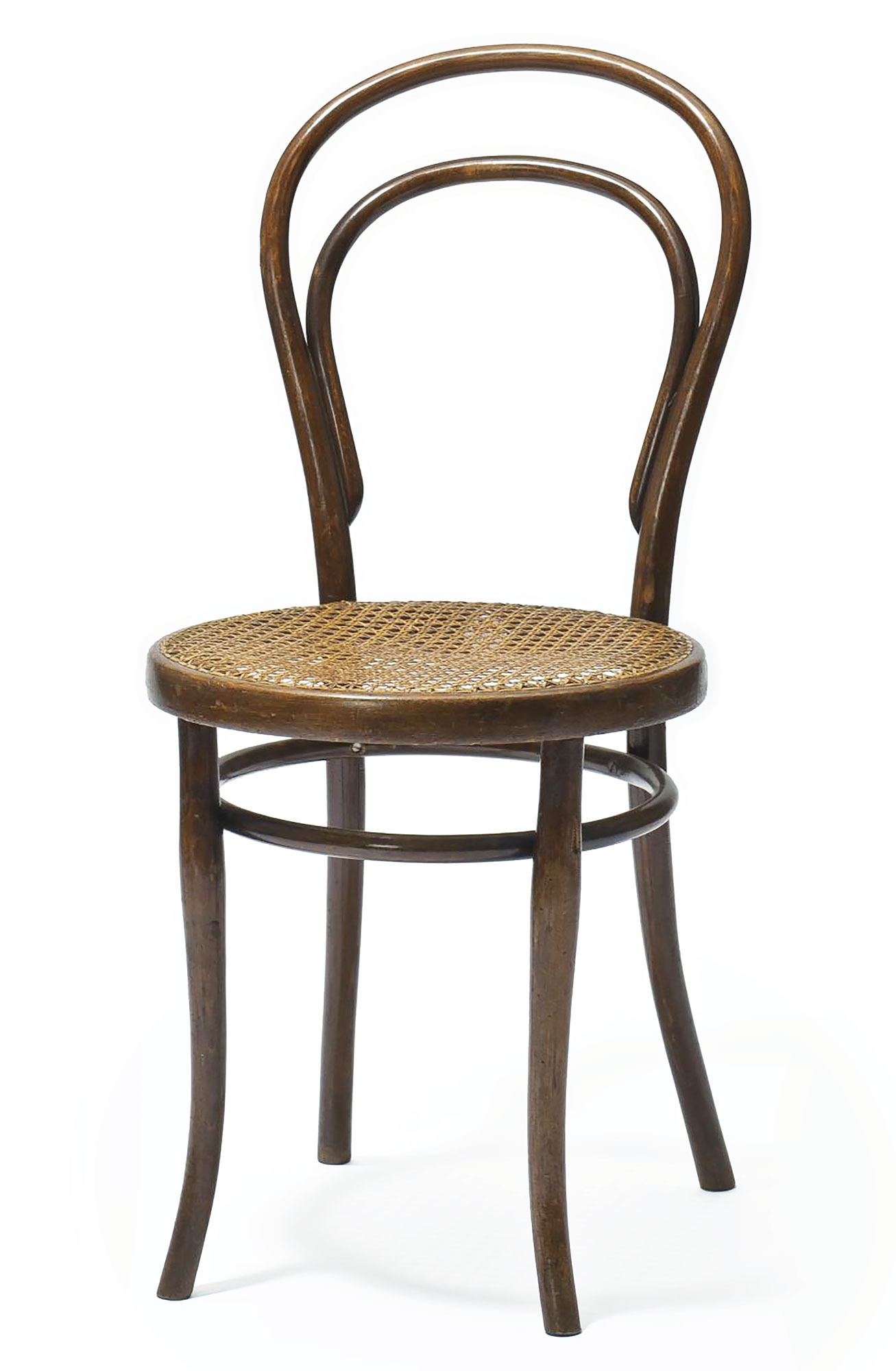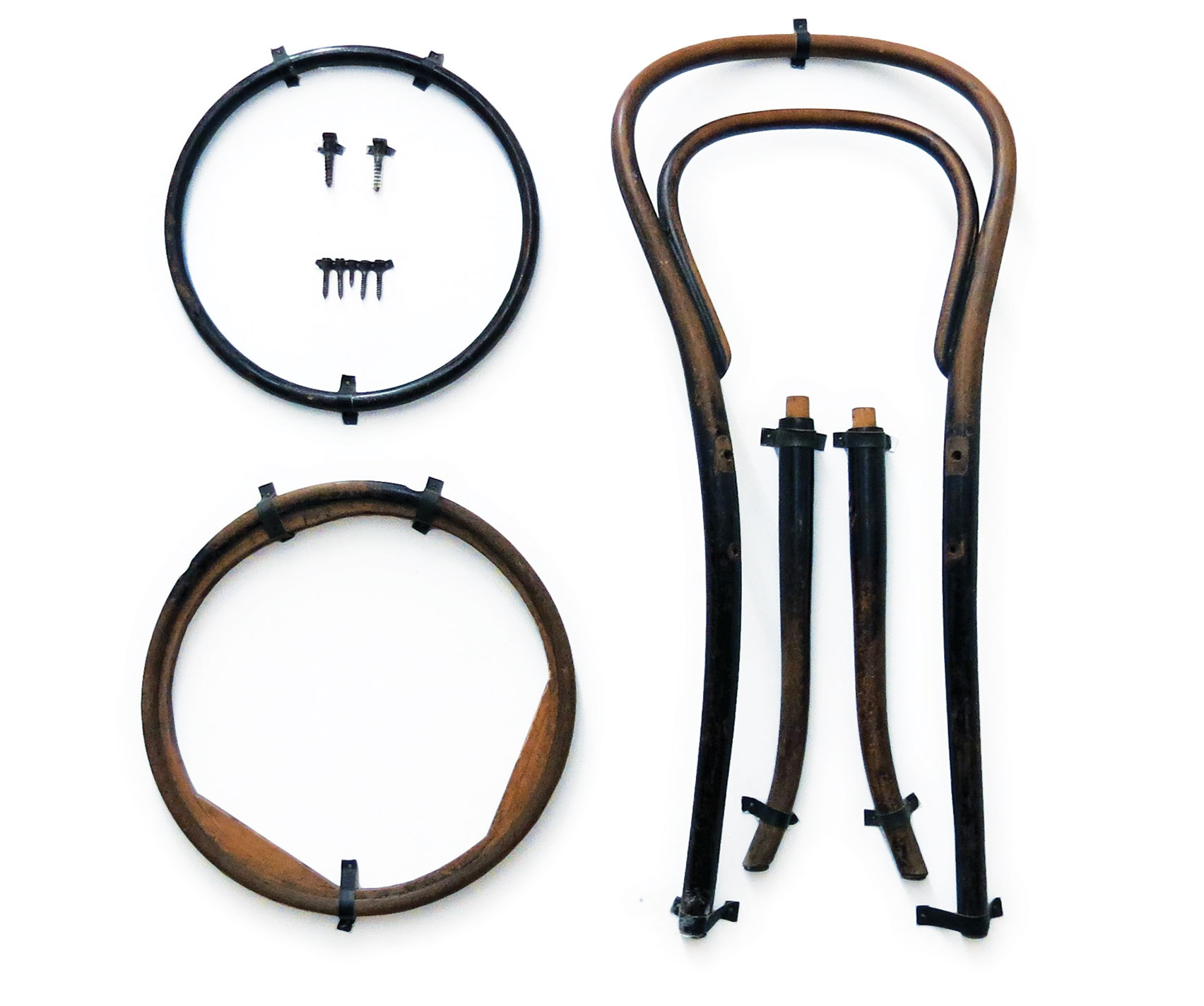This Is Every Restaurant’s Favorite Chair
Writer Leslie Gilbert Elman
Considered the most popular chair ever made, the Thonet Model No. 14 chair has been in production since 1859. Photo ©MAK/Georg Mayer
The Thonet Model No. 14 chair proves great design truly is timeless
You have seen the Thonet Model No. 14 chair somewhere before. It might have been in your favorite local restaurant. Or maybe it was in a coffeehouse in Vienna, Austria, which is where it made its debut in 1859. The chair is so familiar, you might not realize that it represents a technological breakthrough that revolutionized the way furniture was made and sold.
The man who made this happen was Michael Thonet, a furniture maker born in 1796 in Boppard, a Rhine River town in what is now Germany. Seeking a way to produce furniture faster and more economically, without the need for highly skilled labor, Thonet devised a method of layering and laminating stacks of wood veneers that he could heat with steam and bend into curved components to make chairs.
He exhibited his early “bentwood furniture” prototypes at a trade fair in 1841, where they caught the eye of Prince Metternich, the Austrian chancellor. Metternich invited Thonet to Vienna and helped him secure several prestigious commissions, including one for Emperor Franz Josef. In 1842, Thonet was granted a patent for the right to “bend any type of wood, even the most brittle, into the desired forms and curves by chemical and mechanical means.” And that’s when the pieces started to fall into place for him—literally and figuratively.
Interest in his designs grew as he continued to exhibit at trade fairs throughout Europe, including the landmark 1851 Great Exhibition at the Crystal Palace in London (pet project of Queen Victoria’s husband, Prince Albert). Basing his operations in Vienna, in 1853, he founded Gebrüder Thonet (Thonet Brothers), a family business that included his five sons. By 1855, Thonet had figured out how to bend solid beech instead of the more costly laminated veneer. The following year, he received a second patent, which gave him the exclusive right to manufacture bentwood furniture in the Austro-Hungarian Empire for 13 years.
Then, in 1859, he introduced the design for which he would forever be known: the Model No. 14 chair.
Simpler and less costly than previous models, the Model No. 14 was embraced immediately by the public and especially by the commercial trade—restaurants and hotels—which recognized its unique combination of stylish design and durability. If you owned a coffeehouse in Vienna, you furnished it with Thonet Model No. 14 chairs. Many people simply referred to them as café chairs. They were, as one review explained, “admirably adapted to withstand the rough usage of public life.” Customers ordered them by the dozens. And Thonet’s systematic production process could accommodate the volume.

Component pieces for the Thonet Model No. 14 chair could be packed in flat boxes that filled shipping containers economically with no space wasted. Photo ©MAK
Not only did Thonet design the chairs and devise the method of bending wood to make them, he also invented the custom factory equipment needed to manufacture the chairs. With its streamlined design and standardized parts, the Model No. 14 chair could be easily mass-produced. And customer demand ensured that it would be.
Leslie Gilbert Elman is the author of Weird But True: 200 Astounding, Outrageous and Totally Off the Wall Facts. She writes about antiques and other subjects for Design NJ.
From Dec. 19, 2019, to April 13, 2020, MAK–Museum of Applied Arts in Vienna will celebrate the 160th birthday of the Model No. 14 with an exhibition called “Bentwood and Beyond: Thonet and Modern Furniture Design.”
